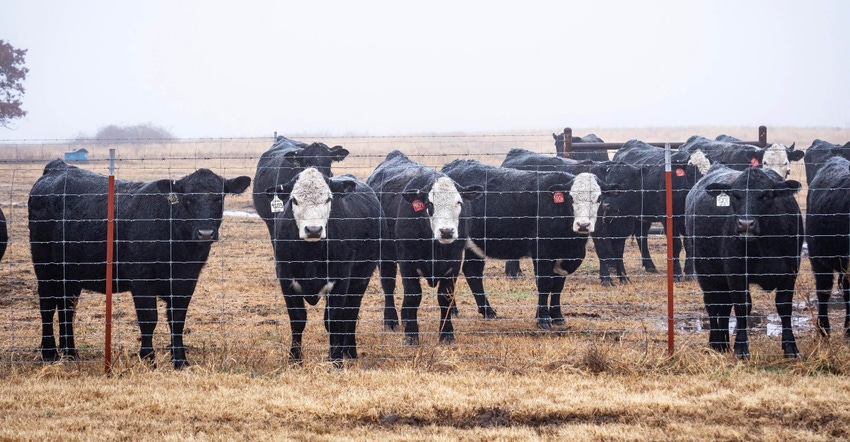Multi-disciplinary project aims to predict stress in cattle
Moderate-growth, high-growth cattle to be studied under same conditions to determine if stress affects them differently.
November 2, 2023

Oklahoma State University researchers have launched a $1 million, four-year, multi-disciplinary project to study stress in cattle using artificial intelligence and sensor technologies.
“I had a theory that some of these animals may be genetically predisposed to becoming dark cutters or having heart failure or being less efficient due to physical stressors and animal-environment interactions,” said Janeen Salak-Johnson, associate professor of animal and food sciences.
Dark cutter refers to meat that fails to have a bright red color when grading. Carcasses without bright coloring are not sold in retail stores and are discounted for other food services. Scientists believe the condition is partially caused by the accumulative stressors livestock animals experience during the weaning phase.
The project, funded by the U.S. Department of Agriculture - Interdisciplinary Engagement in Animal Systems program, will study moderate-growth and high-growth cattle under the same conditions to determine if differences exist between them when they are stressed. Sensor technology will be used to monitor animal behavior and response to stress, including heart rate, body temperature, steps and respiration rate.
“These conditions don’t happen because animals experience stress one time. It’s a cumulative effect,” Salak-Johnson said. “This project will allow us to characterize the physiological responses of these animals based on their genetics for growth. We hope to unravel where in their lifespan they face the most critical stressors and if the level of stress they experience is influenced by their genetic capacity for growth.”
Traditionally, producers select cattle based on production traits, such as growth rate, carcass quality or milk production.
“The frequency of late-finishing period death loss has been gradually increasing. There is speculation that some of this problem could be related to continued aggressive selection for growth in cattle,” said David Lalman, professor of animal and food sciences. “Many believe this is because the animals’ energy supplies are used to support high growth, leaving little energy to support the immune system.”
In a preliminary study, Salak-Johnson’s research team collected blood samples from the same two types of cattle. Results indicated that their genetics affected blood parameters and immune responses.
“We’ve started to realize that even the stress response of these animals to weaning is partly influenced by genetics,” she said.
Ranjith Ramanathan, a professor of animal and food sciences specializing in meat science, said researchers also plan to work with veterinary consultants and large feedlot operations to continue collecting tissue from cattle that have died from sudden death syndrome.
“We are looking for protein or metabolite changes in sudden death cattle to predict what caused it,” he said. “The more samples we study, the more we’ll be able to learn about their death.”
A biomathematics tool will be used to study tissue samples, and AI technology will assist with data assessment to create a tool that predicts what animals are predisposed to stress. Ashley Railey, assistant professor of sociology, will interview producers about the likelihood of adopting the predictive technology. Others involved in the research are Paul Beck, Gretchen Mafi and Morgan Pfeiffer from animal and food sciences; Sathya Aakur from computer science; and Ning Wang from biosystems and agricultural engineering.
“I really think there’s an opportunity for this team to have a significant impact on this area of research because we are going to look at a more holistic and more complete characterization of these animals,” Salak-Johnson said. “This research could lead to producers having the ability to implement strategies at certain times of the year or when they see certain behavioral changes in livestock.”
You May Also Like



